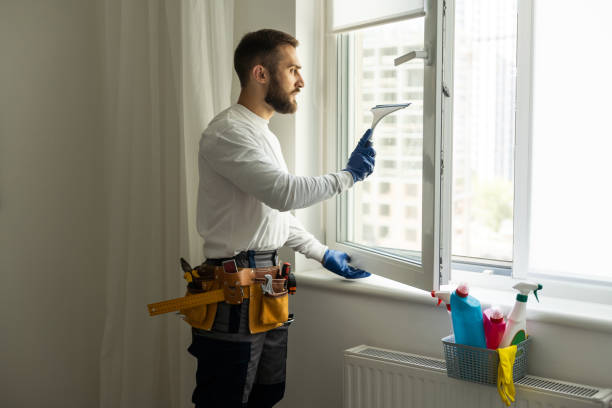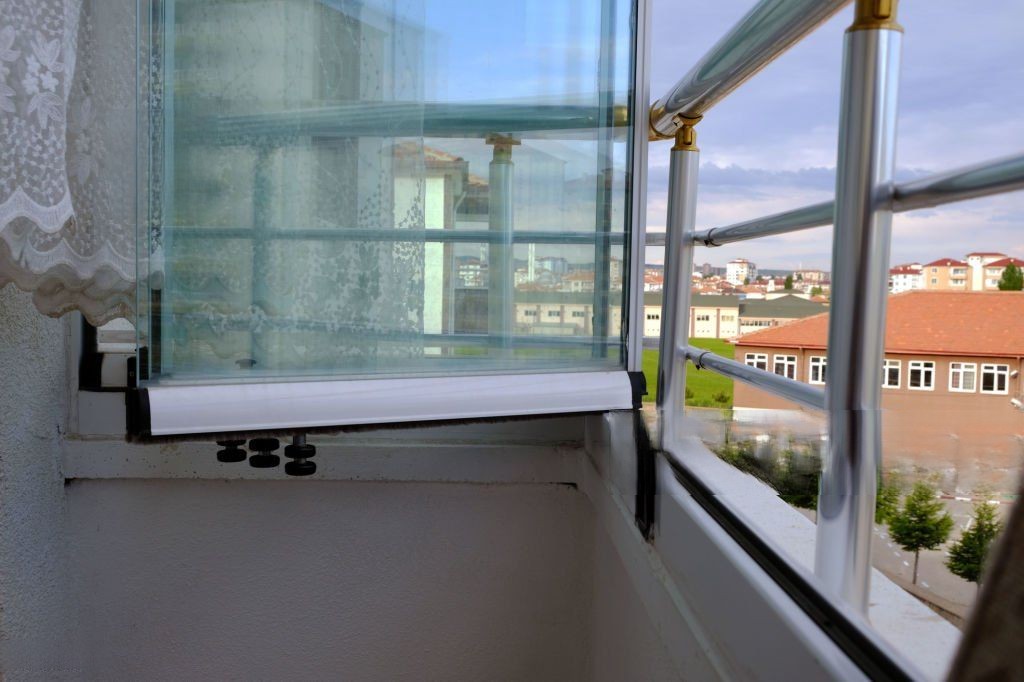-
Have you always wanted to solve the window condensation problem but have never acted on it because you don't know anything about the science of condensation, let alone how to avoid or solve it?
-
Do you desire a living environment that remains comfortable and healthy?
If you answered yes, you're in luck.
In today's blog post, I'll discuss the causes, effects, and practical solutions for window condensation. From temporary quick fixes to sustainable strategies, everything you need is here. Ready for a long-term solution?
Let's get started:
What is window condensation?
Moisture in the air can change from a gaseous state to a liquid state, known as condensation. This often happens when warm, moist air comes into contact with a cold surface. It often happens with windows, which are usually colder than indoor air, especially when cold outside.
Condensation occurs when moist air comes into contact with a cold surface, such as window glass. In the process, water vapor turns into liquid droplets on the glass. This may sound like an annoying problem (and it is), but the real trouble comes when endless condensation becomes a hidden problem in your home.
Why is it essential to prevent window condensation?
The prevention and management of window condensation must be taken seriously. These include the effects of condensation on the window's structure and human health.

The effects of condensation on windows
Structural Damage: Depending on the window's material, condensation that builds up over time can damage the frame and sills. Wooden windows rot, and metal windows corrode, so the long-term buildup of condensation may damage window frames.
Energy Efficiency Issues: Condensation can reduce energy efficiency by causing buildings and windows to lose insulating ability. This results in higher energy bills.
Consequently, with the proper insulation and ventilation, homes can save up to 15% of their annual heating costs.
Aesthetic and sanitary problems—Water damage from condensation is phenomenal over time, leading to the growth of mold and mildew, which can be hazardous to human health.
It also damages the windows, window frames, and walls by compromising their structure and aesthetics, requiring colossal money to fix these.
Health effects of condensation
Mold growth: Window condensation is the perfect place for mold to grow.
Condensation that breeds mold is very unhealthy, as it can trigger allergies, asthma, and other respiratory diseases, especially if your family has respiratory problems.
Expert tip: Mold proliferates after water damage, so always check for mold in areas where condensation may occur and remove it immediately.
Respiratory problems: Prolonged exposure to mold odors can exacerbate pneumonia and other respiratory recovery problems. This is especially true if you have family members with respiratory problems.
Allergies: Prolonged mold exposure can lead to allergy symptoms such as sneezing, runny nose, and itchy eyes. Long-term accumulation can have serious consequences.
Why is there condensation on my windows?
Many factors contribute to window condensation, which can be related to the type of window, how well it is insulated, and the daily environment of your home.
Therefore, it is crucial to know what causes these particular conditions in your home, so let's explore the common factors that lead to window condensation below:
Environmental factors (humidity, temperature changes)
Humidity:
Humidity refers to the amount of moisture in the air. The most common culprit is high indoor humidity, which causes moisture to condense and collect on windows.
For example, in the winter, cold air from outside cools the window glass so that the warm, humid air inside can't hold all the moisture, leading to condensation.
Temperature differences:
Condensation can occur with even the slightest temperature disparity between inside and outside. As the weather turns cooler and the air inside warms, condensation can form on the cold surfaces of the window. Condensation is a significant concern in poorly insulated homes with single-glazed windows.
Poor ventilation
Poor ventilation is another crucial cause of window condensation. Inadequate air circulation can lead to condensation, and actions such as cooking, showering, and even breathing can create moisture that can increase relative humidity. Therefore, proper window ventilation is likely to reduce this problem significantly.
Other factors causing condensation
Laundry, cooking, or drying clothes indoors can also increase indoor humidity without a properly functioning ventilation system. For example, steam from boiling water on a stove can increase air humidity.
Which types of windows are prone to condensation?
Condensation occurs often on single-glazed windows, older windows with poor seals, and improperly or incorrectly installed double-glazed windows.
For example:
Condensation on single-glazed windows
Condensation can also be a problem with double-glazed windows, but single-glazed windows are the most prone to it.
Single-pane glass is more prone to condensation because it has no insulating layer. When it comes to the glass, single-pane glass can pass cold air through the glass, leading to a perfect combination for condensation to happen.
Condensation between new windows or double-glazed windows
Two new windows or double glazing can also be used between the beads due to condensation at times. When a window seal is compromised, moisture can get between the panes through leaks from the edges, such as water droplets and other condensation.
This can build up over time and fog the window, reducing effectiveness.
8 practical tips to quickly control or reduce window condensation
If you notice condensation build up on your windows, you've got to act quickly. Here are some quick tips that will help you to reduce condensation and control:
1. Also, to help circulate air in the room, leave the door to the room open at night and open the drapes when you go to bed.
2. open a window to let the bathroom air out when showering.
3. When Cooking, Make Sure To Open The Kitchen Windows so that steam doesn't get trapped in a space.
4. Dry clothes outside: this will help avoid an unnecessary excess of moisture in the air.
5. keep the heating at a constant temperature to ensure an even temperature and to avoid excessive temperature differences.
6. replace double-glazed windows to make them more efficient and increase insulation.
7. treat damp areas to avoid increased moisture in the room.
8. use hygroscopic agents (such as silica gel packs or specific hygroscopic crystals) to reduce humidity in enclosed areas.
Also, you can reuse dehumidifiers. This is because dehumidifiers effectively reduce indoor humidity, reducing the likelihood of window condensation. Dehumidifiers, such as kitchens and bathrooms, are used for best results in high humidity.
Dehumidifiers draw in humid air, cool it to remove moisture, and then reheat and release the dry air back into the space. This reduces condensation on windows.
Effective Ways to Prevent and Solve Window Condensation
Short-term solutions to window condensation are not the most effective. Preventing it in advance and solving the problem for the long term is the root of the problem. Here are some ways that can help you prevent window condensation problems in the long term:
Install double glazing
Double-glazed windows provide better insulation by reducing the temperature difference between the air inside the home and the surface of the window. In the case study home, condensation was significantly reduced with energy-efficient double-glazed windows.
Install blinds or insulated curtains.
Insulated curtains or blinds maintain a consistent temperature in the room, thus reducing the likelihood of condensation.
Installation of Ventilation Systems
The ventilation process of Heat Recovery Ventilators (HRV) and Energy Recovery Ventilators (ERV) effectively improves air quality and humidity by exchanging indoor air for outdoor air. These track systems provide fresh air to your living space and ensure energy savings.
Regularly maintain and inspect your windows.

The best way to prevent condensation is to perform preventive maintenance through routine inspections to ensure they are in good condition. Here is a list of regular seasonal maintenance:
-
Check for cracked window seals and repair any damaged seals.
-
It is essential to ensure that all mechanical ventilation systems are functioning correctly and to clean the mechanical ventilation systems.
-
Use area-wide dehumidifiers regularly to avoid breakdowns.
Use window film to prevent condensation.
An inexpensive anti-condensation window film is an excellent solution for any existing window installation. The glass surface becomes warmer when the film is installed, reducing condensation.
Air circulation for a comfortable stay

Proper ventilation helps regulate indoor humidity, improves indoor air quality, and reduces condensation and mold growth. Perhaps install some devices that help with air circulation, for example:
-
I am installing some exhaust fans in the bathroom and kitchen to keep moisture out and dry.
-
Install a ceiling fan in the middle of the living room to improve air circulation.
-
Install a mechanical ventilation system inside the house to maintain air circulation. This system exchanges stale indoor air with fresh outdoor air and retains heat to improve ventilation rates.
Combining the above long-term strategies can help you prevent condensation and maintain a healthy home environment.
Conclusion
Whether you're a homeowner or a domestic user, you should take window condensation seriously; its effects can be far-reaching.
Fortunately, by following the steps and strategies outlined in this guide, homeowners can effectively manage and prevent window condensation, ensuring a healthier, more comfortable living environment.
Share your window needs with us, and feel free to request a free quote. We'd love to help you keep your home in tip-top shape.
FAQs:
Do open windows help avoid condensation?
Opening windows reduces the room's humidity, allowing fresh air in and humid air out, thus avoiding condensation.
When does a dehumidifier dry a room?
This depends on the size of the room and the relative humidity. It usually takes a few hours to a few days to reach the desired humidity level.
What should the humidity level be in a house?
For most homes, 30% to 50% relative humidity is appropriate. This humidity range prevents condensation and keeps the living area warm.
Why does mold keep coming back?
Mold can recur if the underlying humidity problem is not addressed. Mold thrives in environments with high humidity, leaks, and poor ventilation. Consistent care and observation must prevent mold recurrence.
Are there do-it-yourself solutions to condensation problems?
Yes, proper air circulation is beneficial, and ventilation methods like dehumidifiers and dehumidifiers are also very effective DIY solutions.


